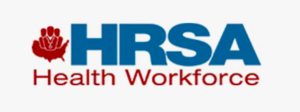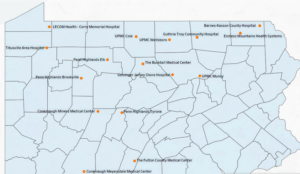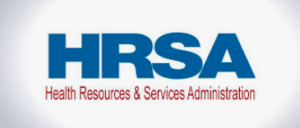- Social Factors Help Explain Worse Cardiovascular Health among Adults in Rural Vs. Urban Communities
- Reducing Barriers to Participation in Population-Based Total Cost of Care (PB-TCOC) Models and Supporting Primary and Specialty Care Transformation: Request for Input
- Secretary Kennedy Renews Public Health Emergency Declaration to Address National Opioid Crisis
- 2025 Marketplace Integrity and Affordability Proposed Rule
- Rural America Faces Growing Shortage of Eye Surgeons
- NRHA Continues Partnership to Advance Rural Oral Health
- Comments Requested on Mobile Crisis Team Services: An Implementation Toolkit Draft
- Q&A: What Are the Challenges and Opportunities of Small-Town Philanthropy?
- HRSA Administrator Carole Johnson, Joined by Co-Chair of the Congressional Black Maternal Health Caucus Congresswoman Lauren Underwood, Announces New Funding, Policy Action, and Report to Mark Landmark Year of HRSA's Enhancing Maternal Health Initiative
- Biden-Harris Administration Announces $60 Million Investment for Adding Early Morning, Night, and Weekend Hours at Community Health Centers
- Volunteer Opportunity for HUD's Office of Housing Counseling Tribe and TDHE Certification Exam
- Who Needs Dry January More: Rural or Urban Drinkers?
- Rural Families Have 'Critical' Need for More Hospice, Respite Care
- Rural Telehealth Sees More Policy Wins, but Only Short-Term
- States Help Child Care Centers Expand in Bid To Create More Slots, Lower Prices
ICYMI: Explore HeatRisk Forecast Tool
 In case you missed it: last month, the National Oceanic and Atmospheric Administration and the Centers for Disease Control and Prevention created the nation’s first health-based alert system and heat guidance for clinicians. As part of this effort, the CDC also provides a HeatRisk Dashboard with resources for high-heat days, details on local air quality, and actions to stay safe in these conditions. Finally, the CDC has a site with clinical guidance for heat health, focused initially on treating children with asthma, pregnant women, and people with cardiovascular disease.
In case you missed it: last month, the National Oceanic and Atmospheric Administration and the Centers for Disease Control and Prevention created the nation’s first health-based alert system and heat guidance for clinicians. As part of this effort, the CDC also provides a HeatRisk Dashboard with resources for high-heat days, details on local air quality, and actions to stay safe in these conditions. Finally, the CDC has a site with clinical guidance for heat health, focused initially on treating children with asthma, pregnant women, and people with cardiovascular disease.
CMS Now Accepting Applications for Joining the Medicare Shared Savings Program
 Apply by June 17. The Centers for Medicare & Medicaid Services (CMS) is now accepting applications for Accountable Care Organizations (ACOs) to participate in the Medicare Shared Savings Program, in which groups of doctors, hospitals, and other health care providers collaborate, with the goal of offering coordinated high-quality care to people with Medicare. ACOs inexperienced with risk-based payments and who provide care to rural and underserved beneficiaries may be interested in Advance Investment Payments, and those interested in alternative payments for primary care providers may consider the ACO Primary Care Flex Model. For both of these options, ACOs must first apply to the Shared Savings Program. To learn more about the application process, register for the upcoming June 5 webinar on Completing Phase 1 of the Application and Avoiding Common Deficiencies. Email questions to SharedSavingsProgram@cms.hhs.gov.
Apply by June 17. The Centers for Medicare & Medicaid Services (CMS) is now accepting applications for Accountable Care Organizations (ACOs) to participate in the Medicare Shared Savings Program, in which groups of doctors, hospitals, and other health care providers collaborate, with the goal of offering coordinated high-quality care to people with Medicare. ACOs inexperienced with risk-based payments and who provide care to rural and underserved beneficiaries may be interested in Advance Investment Payments, and those interested in alternative payments for primary care providers may consider the ACO Primary Care Flex Model. For both of these options, ACOs must first apply to the Shared Savings Program. To learn more about the application process, register for the upcoming June 5 webinar on Completing Phase 1 of the Application and Avoiding Common Deficiencies. Email questions to SharedSavingsProgram@cms.hhs.gov.
HRSA Modifies Definition of Rural for FORHP Grants

Comment by May 28. On April 26th, the Federal Office of Rural Health Policy (FORHP) announced a proposed modification to the definition of ‘rural’ used to designate eligible areas for rural health grants. Because access to needed health care is likely to be reduced when roads are most difficult to traverse, FORHP proposes to modify the definition of rural areas by integrating the new Road Ruggedness Scale (RRS) released in 2023 by the Economic Research Service (ERS) of the U.S. Department of Agriculture. The proposed modifications are based on a data-driven methodology to identify areas with difficult mountainous terrain. All areas included in the current definition of rural would remain included.
Overdose Deaths Are in Decline

Last week, the Centers for Disease Control and Prevention released provisional data from their National Center for Health Statistics (NCHS) indicating an estimated 107,543 drug overdose deaths in the United States in 2023 – a decrease of 3 percent from the 111,029 deaths estimated in 2022. This is the first annual decrease in drug overdose deaths since 2018. Several states across the nation saw decreases; Nebraska, Kansas, Indiana, and Maine experienced declines of 15 percent or more. Still, some states saw increases. Alaska, Washington, and Oregon stood out with notable increases of at least 27% compared to the same period in 2022. Various factors make a difference in provisional counts versus final counts, such as records indicating “pending investigation.” The data are based on death records NCHS receives each month from state vital registration offices with no distinction between urban and rural.
Coming Soon: Available Funding for Enhancing The Nurse Education, Practice, Quality and Retention – Workforce Expansion Program

HRSA’s Bureau of Health Workforce has dedicated $4.75 million to this program to increase the nursing workforce in rural (non-metro) and underserved areas to address the critical shortage of nurses, specifically in acute and long-term care settings. Eligible applicants include: public and private institutions of higher education; accredited schools of nursing; health care facilities; entities that confer associate’s degrees in nursing, such as community colleges; and partnerships between training and health care facilities. This is a forecasted opportunity and may change when the application opens.
“Economic Development Drives Population Health”: A New Vision for Rural Hospital Leadership

A new feature article in The Rural Monitor describes the role that rural hospital investments can play in contributing to community health. The story details a Critical Access Hospital in Wisconsin making infrastructure investments in their downtown and a New Hampshire medical center investing in public transit and affordable housing.
Developing Occupational Therapy and Telehealth Toolkit

Occupational Therapy and Telehealth Toolkit. Created by the Greater Plains Telehealth Resource and Assistance Center, the toolkit gives information on basics and best practices for providing occupational therapy via telehealth.
New Medicare Behavioral Health Providers: Incorporating MHCs and MFTs Into Your RHC

– Thursday, May 9 at 1:00 pm Eastern. The National Association of Rural Health Clinics (NARHC) will host the free, FORHP-supported webinar with information on incorporating Marriage and Family Therapists (MFTs) and Mental Health Counselors (MHCs) into Rural Health Clinics (RHCs). Medicare coverage of Marriage and Family Therapists and Mental Health Counselors in RHCs began January 1, 2024. This webinar will feature representatives from the National Board for Certified Counselors and the American Association for Marriage and Family Therapy, who will provide information to ensure RHCs are equipped to consider expanding behavioral health services. Additional time for Q&A will be provided. Advanced registration is required.
Understanding HRSA Modifications to the Definition of Rural for FORHP Grants
 – Comment by May 28. On April 26th, the Federal Office of Rural Health Policy (FORHP) announced a proposed modification to the definition of ‘rural’ used to designate eligible areas for rural health grants. Because access to needed health care is likely to be reduced when roads are most difficult to traverse, FORHP proposes to modify the definition of rural areas by integrating the new Road Ruggedness Scale (RRS) released in 2023 by the Economic Research Service (ERS) of the U.S. Department of Agriculture. The proposed modifications are based on a data-driven methodology to identify areas with difficult mountainous terrain. All areas included in the current definition of rural would remain included.
– Comment by May 28. On April 26th, the Federal Office of Rural Health Policy (FORHP) announced a proposed modification to the definition of ‘rural’ used to designate eligible areas for rural health grants. Because access to needed health care is likely to be reduced when roads are most difficult to traverse, FORHP proposes to modify the definition of rural areas by integrating the new Road Ruggedness Scale (RRS) released in 2023 by the Economic Research Service (ERS) of the U.S. Department of Agriculture. The proposed modifications are based on a data-driven methodology to identify areas with difficult mountainous terrain. All areas included in the current definition of rural would remain included.
HHS Releases Nondiscrimination in Health Program and Activities Final Rule

Effective May 6. The U.S. Department of Health and Human Services (HHS) Office of Civil Rights issued a final rule under Section 1557 of the Affordable Care Act advancing protections against discrimination in health care. At a minimum, the rule will restore protections against discrimination on the basis of race, color, national origin, sex, age, and disability. It will also reduce language access barriers, expand physical and digital accessibility, and address bias in health technology. With the restoration of the rule, HHS aims to increase meaningful access to health care for communities across the United States.
